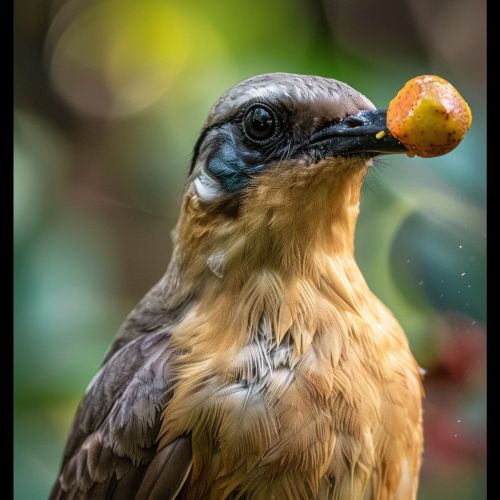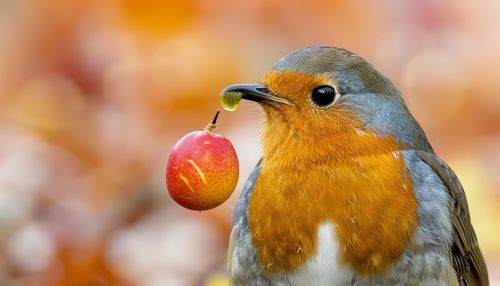Frugivore
Overview
A Frugivore is an animal that thrives mostly on raw fruits, succulent fruit-like vegetables, roots, shoots, nuts and seeds. It can be any type of herbivore or omnivore where fruit is a preferred food type. Because approximately 20% of all mammalian herbivores also eat fruit, frugivory is common among mammals. Since fruits contain relatively high amounts of energy, animals need to be able to digest and metabolize these efficiently.


Evolutionary Advantages
Frugivores are advantageous to the survival and evolution of the plant species they feed on, as they effectively disperse seeds over a wide area. This is particularly important for plants that have evolved to have their seeds dispersed by specific animals, known as seed dispersers. The seeds of such plants often have evolved to survive the digestive tract of the animal and can even require passage through the tract to germinate.
Frugivory in Different Animal Groups
Frugivory is common among birds, mammals, and even some species of fish and reptiles. Different animal groups have different adaptations that allow them to consume and digest fruit.
Birds
Many birds are frugivores, as are some insectivorous birds that supplement their diet with fruit. Some notable frugivorous birds include the American Robin, the Cedar Waxwing, and the Toucan.
Mammals
Among mammals, frugivory is common among bats and primates, such as the Orangutan, the Chimpanzee, and the Gibbon. Some large mammals, like the African Elephant, are also frugivores, in addition to being folivores.
Reptiles
Some reptiles, such as the Green Iguana, are also frugivores. In the case of the Green Iguana, fruits make up approximately 50% of their diet.
Adaptations for Frugivory
Frugivores have evolved various physical and behavioral adaptations for dealing with the challenges of a fruit diet. These include features for finding, acquiring, and processing fruit.
Physical Adaptations
Physical adaptations for frugivory can include a wide gape and a reduced number of teeth for birds, and specialized teeth for grinding hard seeds for mammals. Some frugivores, like the Orangutan, have long arms for reaching and grabbing fruit.
Behavioral Adaptations
Behavioral adaptations can include the ability to recognize ripe fruit, the ability to search efficiently for fruit, and patterns of social behavior that allow for effective fruit consumption and seed dispersal.
Impact on Ecosystems
Frugivores can have a significant impact on their ecosystems. They can influence the spatial distribution of the plants they feed on by dispersing their seeds, and can also influence the genetic structure of plant populations.
